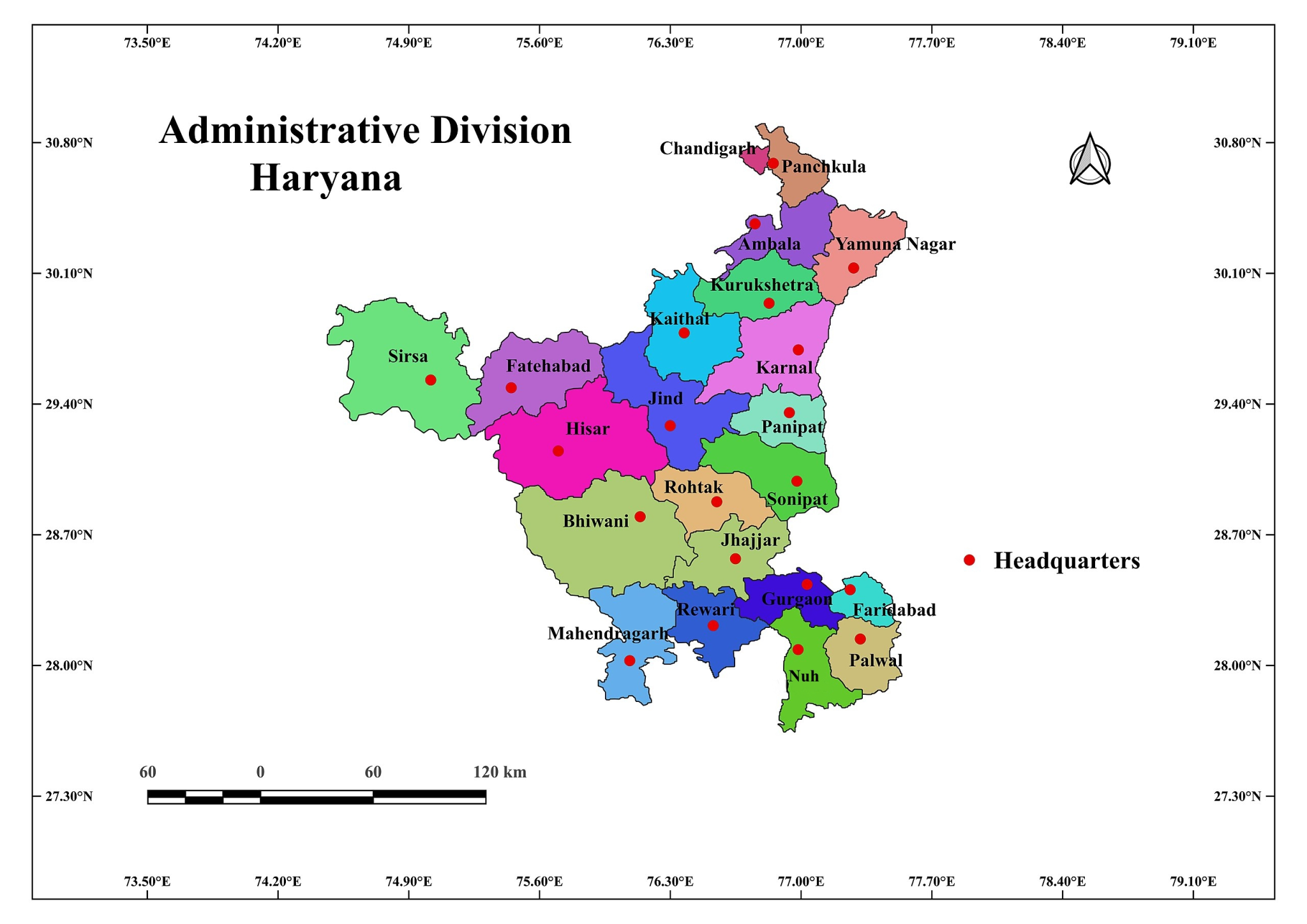Haryana-Punjab Agricultural Divergence | 06 Sep 2024
Why in News?
Haryana's agriculture stands apart from Punjab due to its diversified cropping profile, contrasting with Punjab's environmentally and fiscally unsustainable rice-wheat monoculture.
Key Points
- Punjab:
- Monoculture Cropping:Punjab’s agriculture is characterized by a rice-wheat monoculture, with farmers growing only these two crops during the kharif (monsoon) and rabi (winter-spring) seasons, respectively.
- Area under rice cultivation increased from 28.9 lakh hectares (lh) in 2014-15 to 31.9 lh in 2023-24.
- Output Rankings:Punjab ranks 3rd in both wheat and rice output in India.
- India has eight major wheat-producing states compared to 16 for rice.
- Water and Environmental Issues:Rice is water- intensive crop and requires about 25 irrigations, whereas wheat requires only 4-5 irrigations.
- Excessive rice production contributes to groundwater depletion and high fiscal costs for grain procurement and stocking.
- Monoculture Cropping:Punjab’s agriculture is characterized by a rice-wheat monoculture, with farmers growing only these two crops during the kharif (monsoon) and rabi (winter-spring) seasons, respectively.
- Haryana:
- Less Monoculture:Haryana features a more diversified cropping pattern compared to Punjab, avoiding the rice-wheat monoculture.
- Kharif Season: Includes rice, cotton, bajra (pearl millet), and guar (cluster bean).
- Rabi Season: Includes wheat, rapeseed-mustard, chana (chickpea), and sunflower.
- Rice Varieties: Basmati Rice in Haryana accounts for 56.2% of the rice area (2019-20 to 2023-24).
- Basmati rice consumes less water compared to non-basmati varieties.
- Basmati is planted in July, benefiting from monsoon rains and cooler temperatures, enhancing its fragrance.
- Canal Network: Extensive canal network of 1,594 channels, 14,814 km long.
- Irrigates northeast, central, and northwest districts of Haryana.
- Southern districts (Charkhi Dadri, Jhajjar, etc.) have limited irrigation access.
- Crop Distribution:
- Southern Haryana: Farmers typically grow bajra, guar, and jowar in kharif and wheat, mustard, chana, and barley in rabi.
- Challenges:
- Increased Rice Area:Record levels of rice cultivation in 2024, with 16.4 lakh hectares planted.
- This increase has led to a decrease in cotton acreage (4.8 lakh hectares).
- Decreased cotton acreage from 6.7 lakh hectares in 2023 due to low prices and pink bollworm pest attacks.
- Diversification Efforts:Efforts under the Bhavantar Bharpai Yojana (BBY) to promote crop diversification.
- MSP procurement and price deficiency payments for bajra, mustard, sunflower, and other crops
- Less Monoculture:Haryana features a more diversified cropping pattern compared to Punjab, avoiding the rice-wheat monoculture.

